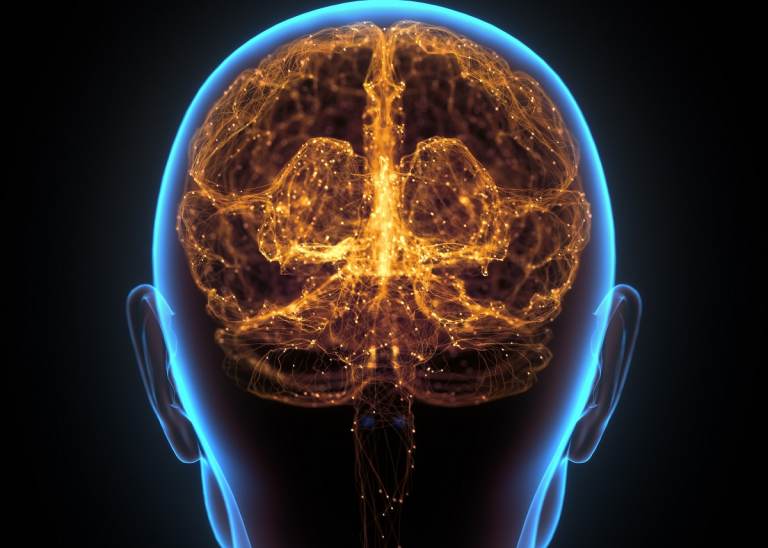Research Notes: The Body Keeps the Score Part 2
Trauma Treatment
Physicality: Trauma Treatment needs to engage the entire organism
- After 5 year old Noam witnessed the collapse of the twin towers on 9/11 he did not suffer from PTSD.
- By being able to escape, Noam became an agent in his own rescue & his imagination allowed him to create a way for those in the buildings to escape as well: trampolines at the bottom.
- He had an active role in his his adaptive response.
Active VS Passive: Traumatized people become stuck & continue their lives as if they are living through that one instance over and over again.
This boils down to Immobilization VS Effective Action
- The effective action as the result of a fight or flight response ends the threat and curbs trauma.
When traumatized people get stuck in fight or flight OR shut down, we have to deactivate these defensive manuvers
- Social engagement through small rhythmic movements and physicality can help.
Physical activities which involve the combination of both bottom up and top down methods work well to help as treatment, such as karate, theater.
- all rely on personal rhythms, visceral awareness, vocal & facial communication (p.88)
Agency
- The feeling of being in charge of your life
- starts with interoception: "the awareness of our subtle sensory, body based feelings" (p. 97)
Peter LEvine and Pat Ogden developed somatic therapies with threefold goals:
1. drawing out sensory information that is blocked by trauma
2. "help patients befriend... the energies released by that inner experience
3. complete the self preserving actions that they could not do when they were trapped (when they originally experienced their trauma)
They repeat the actions that originally traumatized them, but are given the agency to set themselves free from that environment
* Perhaps in the game, Austin, an unreliable guide, may tell the player to stay the course, and continue in the loop, yet the player must realize his dark intentions and break free from his misguidance?
Looping
- "trauma survivors are prone to "Continue the action, or rather the (futile) attempt at action, which began when the thing has happened.
Reliving & Disassociation
- Flashbacks are often worse than the original trauma: Trauma ends. Flashbacks continue on.
"If elements of the trauma are replayed again and again, the accompanying stress horomones engrave those memories ever more deeply in the mind" p. 67
- This can lead to trauma survivors not feeling fully in the present, and imprisons them further in the past. In essence, these loops can create more trauma about a traumatic event.
The feeling of numbness & dissassociation from this can lead people to feel as though they are monsters for not being present or feeling alive during what should be important events: birthdays, deaths etc.
People can shut down emotionally during these events and appear unfeeling or uncaring, leading to shame as their dominant opinion of themselves. Shame for feeling like monsters.
-Yet, physiologically, we can still detect elevated heart rates and stress hormones during these instances.
** While I found acting extremely helpful in high school and used theatrical stage combat techniques that helped greatly to curb my stress during college, I always struggled to feel anything when people would become personally emotional during acting classes. I always felt like heartless for not weeping when people recounted their struggles with the class due to a specific part they had been given. I just shut off.
Flashbacks
So what happens during a flashback?
The brain (amygdala) reacts as if the event is happening at that moment. It goes into overdrive with the emotions that keep you alive during a traumatic event but lead to over reaction, panic attacks & paranoia during the flashback.
Time Dilation
During a trauma event the time keeping mechanism of the brain (the dorsolateral prefrontal cortex) shuts off and you lose your sense of time. Moments stretch out forever, and the person is left with no sense of time.
- This is important because a large part of working through a traumatic experience is knowing that the experience will have a finite ending. This makes even painful experiences tolerable.
- This is important because when the dorsolateral prefrontal cortex shuts off, flashbacks seem unlikely to ever stop. Without a sense of time, there is no finite experience
"Trauma is the ultimate experience of "this will last forever."" p. 70
In order to revisit traumatic events, you have to be grounded, rooted firmly in the present with the realization of your embodied experience - this is why it is not a good idea to relive the experience without professional help and intervention.
Fragmented Memory
The Thalamus is another area of the brain that shuts down. It is responsible for collecting the information of the senses - it the relay station of the brain. Without this middle man, our trauma is not collected as a cohesive narrative: beginning, middle end
- Instead, little bits and pieces get collected as "isolated imprints" p.70 of sound, images, physical sensations and intense emotions (fear, panic, helplessness)

The Brain
Job = keep us alive. Psychological problems occur when internal signals (knowing what we need, generating energy to get us there, warn of danger/opportunity, adjust actions)
Boils down to 3 distinct levels of brain activity:
The Emotional Brain(s)
Reptile Brain - most basic functions:
- eat
- sleep
- cry
- breathe
- hunger
- wetness
- pain
& all other basic life sustaining functions
Mammalian Brain - ie: the limbic system
Use dependent: varies from person to person based on how they are brought up and what experiences they go through
Describes neuroplasticity: creates default setting which trains to fire certain neurons together after repeated exposure.
Senses converge in the limbic system (thalamus) through two highways - the first goes to the amygdala and is very fast, and the second goes to the frontal cortex, where we rationalize information, slightly slower. The difference, although only milliseconds different, accounts for how you feel like you can sense danger right before it happens (as your instinct processes your sensations before you rationally understand why) as well as accounting for how present danger can feel like it lasts extremely long (time dilation?)
- compare this to the MPFC (Medial prefrontal cortex) which is the rational "watch tower" to objectively rationalize our thoughts and emotions
The Rational Brain
The Neocortex - allows us to plan & reflect
Frontal lobes also used in empathy to feel into someone else.
Here we discovered that mirror neurons allow for things like empathy, imitation synchrony & language
- this is why we start to talk like people that we enjoy and spend time with or mirror stances of those we like
Not all positive: mirroring of negative emotions can also occur
"Trauma almost invariably involves not being seen, not being mirrored, and not being taken into account. Treatment needs to reactivate the capacity to safely mirror and be mirrored." p. 59.
The MPFC (watch tower) has to balance between itself and the thalamus. Trauma causes an issue in this balancing act which makes controlling emotions difficult.
Brain Development
Brain develops bottom up - reptilian to neocortex.
reptilian in the womb, mammalian in the first six years, & neocortex later
Issues with PTSD & trauma do not stem from a lack of understanding about their trauma; you can know your response to a situation is irrational, yet understanding it is irrational does not stop it from happening.
DSN: Default State Network
What happens in the brains of trauma patients when they are not thinking about their trauma?
The mohalk of self awareness
- the midline structures of the brain activate with sensations coming from the body from all types of viscera
Traumatized patients had almost no activity in these other areas apart from slight activation in the areas responsible for basic orientation in space.
- Trauma patients learned how to shut down those areas that contain feelings and emotions that define terror.
Top Down & Bottom Up
The two methods for how you can better regulate emotional stagte: Top Down & Bottom up
! No one way works for everyone, each individual needs to find their best balance of techniques.
- refers to how you balance the response from your thalamus (smoke alarm) and your MPFC (watchtower)
TOP-DOWN
Strengthening your MPFC to moderate your bodies sensations rationally
- Mindfullness & Yoga
BOTTOM UP
uses breath, movement & touch to restart your basic reptilian brain instincts
*In my own life, I have had coaching from a bottom up approach & learned breathing exercises as well as dove into acting, theatrical safety combat for stage and screen to work through these issues physically.
Responses to Trauma
Some people respond to triggers by reliving the experience and seeing flashbacks as bits and pieces happening in the moment. They enter into the same heightened state and feel they are reliving the experience.
Those with PTSD shut down and develop tunnel vision and hyper focus.
- This can lead to substance abuse

Depersonalization
Others, (myself included sometimes) go numb during Post Traumatic Stress.
- Instead of seeing flashbacks and reliving the experience, they feel nothing at all.
- This is considered a biological freeze response and sometimes refers to depersonalization.
- This is how those with PTSD can relate horrifying accounts of their traumatizing experience without any feeling. In this instance, talk therapy can be useless.
Here is where the bottom up approach comes in handy
- To help those suffering from depersonalization, you have to regulate bodily sensations such as heart rate and breathing patterns.
Some people start out with explosive responses and then numb out later on.
Over time, lack of presence in the world can actually be more damaging than the explosive responses.
- This can remain untreated as blanked out people don't bother anybody.
Psychology History
Pavlov
- When you lose an automatically trained association, such as between a bell and food in Cognitive Behavioral Therapy, it is referred to as extinction.
When Pavlovs dogs were trapped in a minor flood, they broke down, even after danger was over
- He saw them laying around motionless as a sign of ongoing terror
- Traumatized children and adults behave similarly.
Immobilization
- in these instances, the physical immobilization and imprisonment, in their situation was key
- The dogs were trapped in cages during the flood. They were unable to act on their fight or flight response.
This becomes referred to as "Inescapable Shock"
- a type of learned helplessness.
However, not all of Pavlovs dogs reacted the same way. He catagorized them in four basic temperments: excitatory, lively, calm, & melancholic.
Some even reached an ultraparadoxical stage - animals showed positive response to negative stimuli.
Pavlov suggested this reponse was due to a reflex of purpose: all beings need a purpose to organize themselves. Purpose results in emotions that propel beings to action. \
The Nervous System
Two branches: The sympathetic & parasympatheic nervous system
Sympathetic: responsible for arousal, fight or flight, action triggered by adrenal glands
Parasympathetic: promotes self preservation - digestion, healing. Releases acetylcholine to put a break on arousal functions in the sympathetic nervous system.
Levels of Safety & Responses: focus, collapse, frantic
Neuroception - the capacity to evaluate relative danger and safety in ones environment.
Porge's Theory - suggests that the autonomic nervous system regulates three fundamental psychological states:
Level 1: Social engagement
- Calling out for help, support & comfort
- If none comes, we revert to a more primitive way to survive:
Level 2: Fight or Flight
- Fighting off attacker, or fleeing to the safety of a familiar or different environment.
- This fails if we are trapped or stuck in some way, literally or more figuratively (such as will an abusive caretaker) and takes us to:
Level 3: Freeze or Collapse
- This stage is where we shut down and expend little energy

The Vegus Nerve p.83
Top: Social engagement system depends on regulatory centers such as the vegas nerve & the muscles that activate the face, throat, ear and voice box.
- smiling when others smile, nodding in agreement ect. when the VVC is engaged.
- Slows heart rate and increases breathe.
- Results in Calmness, neutrality and pleasure.
Next: Threat to safety triggers changes. Distress causes changes to expression and tone of voice.
- We beckon others to come to our aid.
Next: If no one comes, our sympathetic nervous system activates our muscles and nerves
- fight or flight response
- heart rate increases, voices change
- *dogs can sense changes because of our sweat glands and will growl!
Next: our dorsal vagal complex takes over if there is nothing we can do
- reaches down below the diaphragm- stomach, kidneys, intestines
- reduces metabolism, plunges heart rate, loss of breathe, and gut stops working.
- awareness shuts down, and often people can no longer feel physical pain
(Perhaps this is why I developed debilitating emetiphobia shortly after my accident? a trauma response to a trauma response?
"We now know that panic symptoms are maintained largely because the individual develops a fear of the bodily sensations associated with panic attacks" - p.99
"Somatic symptoms for which no clear physical basis can be found are ubiquitous in traumatized children and adults" p. 100
That sure sounds like I developed a fear based on my trauma response... )
We literally shut down, disengage or freeze.
This immobilization is from reptilian brain.
Panic for many is preferable to shutting down - "That is why so many abused and traumatized people feel fully alive in the face of actual danger, while they go numb in situations that are more complex but objectively safe" (p.85)
Alexithemia
- When the brain is shutting down, the first step of that process is not being able to name what your physical sensations are or what they mean.
- This occurs when survivors have learned to stop overwhelming emotions
- few people at this stage have interest in therapy
Depersonalization Part 2
- one step further from Alexithemia
- Losing your sense of self: "Incapable of experiencing pleasure or pain" p. 102
Sometimes referred to as an out of body experience, where the person feels as if they are experiencing life from outside their body
- the inner self detaches from the body and lives a phantom existance on its own
**in some ways, this is what Austin is meant to represent. The larger question is, which one is the phantom? Austin? or Sam?
- To break out of this, those experiencing depersonalization must befriend the sensations and emotions they are feeling. They need to physically interact with their bodies to help experience the world
- this can be distressing. The reenactment of unprocessed trauma will cause flashbacks of images and sensations, and a therapist needs to be familiar with how to "stem torrents of sensation and emotion to prevent them from becoming retraumatized by accessing the past" (p. 103)
While the most natural way to calm someone is through physical touch and engagement, this can become a major issue for patients who have been physically or sexually abused.

Isolation
Humans are designed as social creatures - "most of our energy is devoted to connecting with others" p. 80.
Most of our issues stem from not being able to make connections that we are able to deem safe
- in the game's narrative, perhaps this is why Austin plays so many ever changing roles in the relationship? It is because he does not live up to the standards Sam had for him.
Social support relies on reciprocity: being heard and seen by those you care for and believe care for you.
- This is why those who are traumatized seek comfort from others where they can replay their trauma and be understood. It alleviates their sense of isolation, but at the cost of "denying their individual differences" p81



Comments
Post a Comment